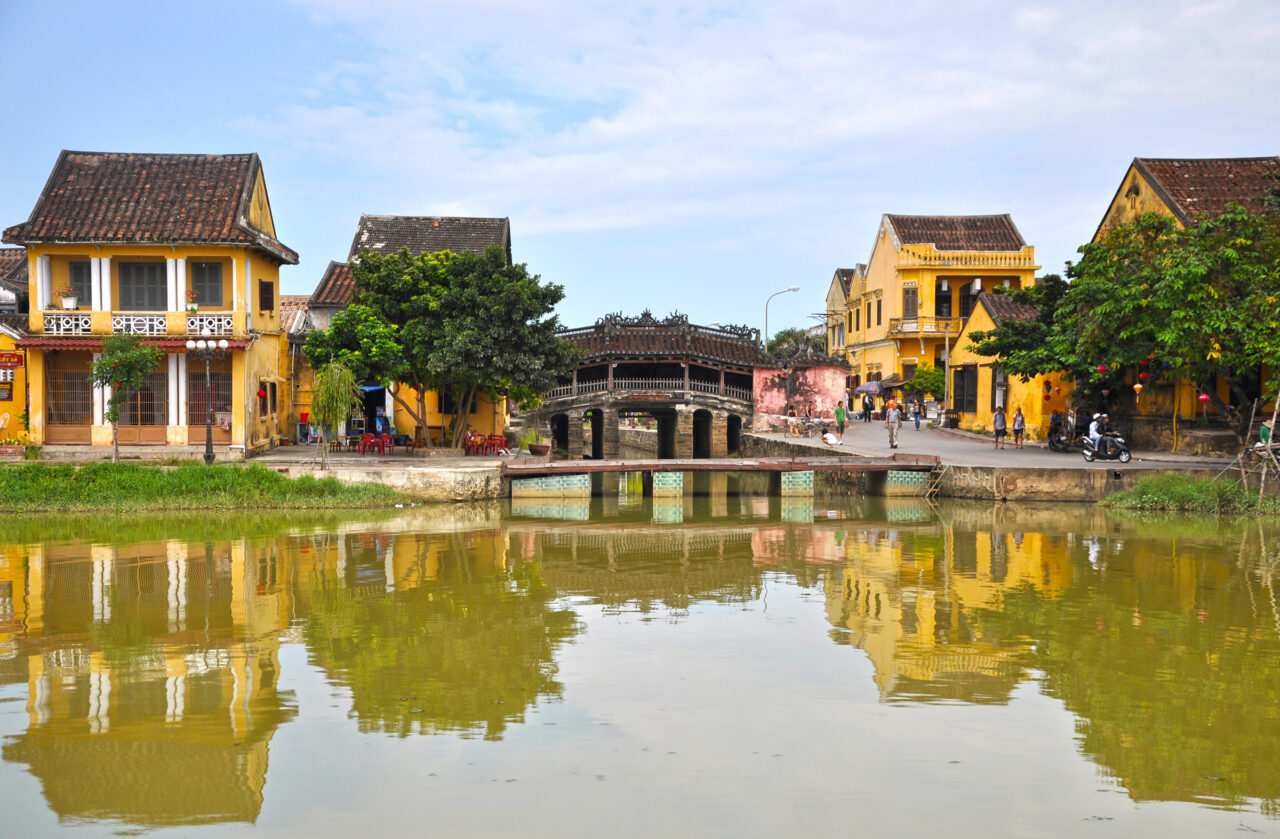Vietnam is both easy and difficult to travel around. It’s easy in that it’s long and thin, so you can start in the North or the South and then just work your way along the coast. You’ll also find there’s a well-trodden backpacker route, with several ways to get around, including trains, sleeper buses and domestic flights.
Sometimes, however, Vietnam can be stressful because as a tourist you tend to get hassled a lot and some of the people speak very little English, which can lead to a lot of misunderstandings and getting lost if you don’t know any Vietnamese.
Setting those things aside though, Vietnam is an interesting place with bustling cities, floating markets, terraced green rice fields and white sandy beaches.
While traveling through the country you’ll get the chance to learn a lot about the country’s history, including the French colonization of Vietnam and the subsequent Vietnam War, which lasted almost 20 years.
When I think about my time in Vietnam I mainly salivate over the food and memories of eating steamy, fragrant bowls of Phở in roadside cafes on the way to somewhere new. I remember the places, but I remember the moments in between even more.
If you plan to spend 10 days in Vietnam, you’ll have plenty of time to get to know the country. In 2 weeks you can see even more, but 10 days is enough to see Ho Chi Minh City, Nha Trang, Hoi An, Hue, Hanoi and Halong Bay.
To help you, I’ve put together a suggested itinerary, including helpful travel tips and suggestions for things to do.
I recommend starting in Ho Chi Minh City and traveling north, since flights are often cheaper to Ho Chi Minh City than they are to Hanoi.
I hope you enjoy this 10 Days in Vietnam itinerary!
Vietnam Itinerary: 10 Days
Overview
Days 1 & 2: Ho Chi Minh City
Days 3 & 4: Nha Trang
Days 5 & 6: Hoi An
Day 7: Hue
Day 8: Hanoi
Day 9-10: Halong Bay
Day 1: Sightseeing in Ho Chi Minh City
Getting to Ho Chi Minh City
To start your trip you’re going to fly into Ho Chi Minh City’s international airport, called Tan Son Nhat International Airport. When you land, there are a number of ways you can get into the city.
The most convenient way would be by taxi, which takes around 45 minutes to District 1. You can catch a taxi from the taxi queue outside the terminal, and fares should cost around 150,000 – 170,000 VND. You will have to pay an extra 10,000 VND to cover the Airport surcharge.
Alternatively you can catch airport bus #109 or airport bus #49. These modern airport buses have English speaking staff on board and take you from the airport to the center of Ho Chi Minh City for 20,000 VND ($1) to 40,000 VND ($1.80).
Introduction to Ho Chi Minh City
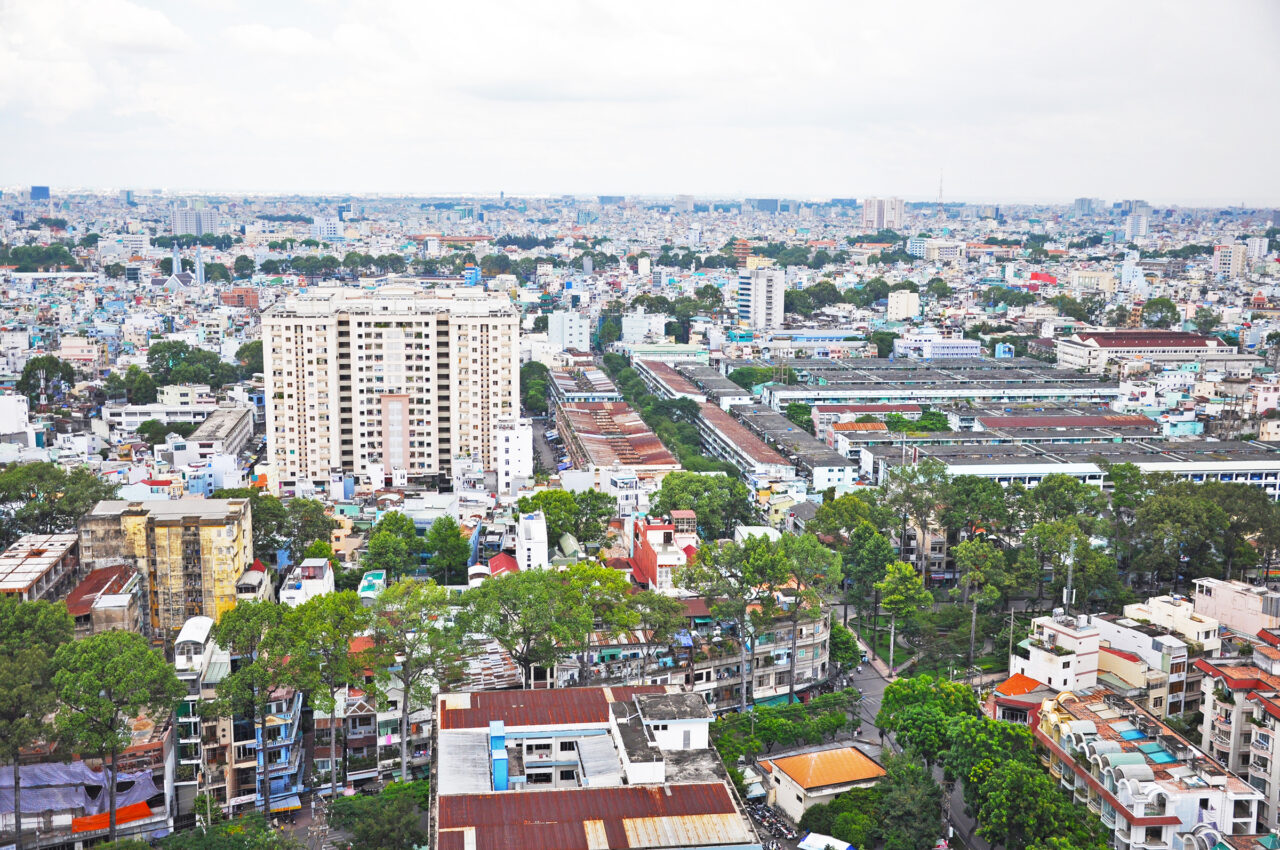
Ho Chi Minh City, located in the south of Vietnam, is the country’s largest city and primary economic center. It’s chaotic, with wide roads full of traffic. Most of the time in order to cross the road you just sort of have to start walking, trust people will stop and hope for the best.
While a lot of people fall in love with Hanoi, my favorite city was Ho Chi Minh City. I found it to be a bustling, fascinating place, full of sights, interesting museums and good food. You’ll want to spend a couple of days here to go sightseeing and explore the Chu Chi tunnels.
Is it Saigon or Ho Chi Minh City?
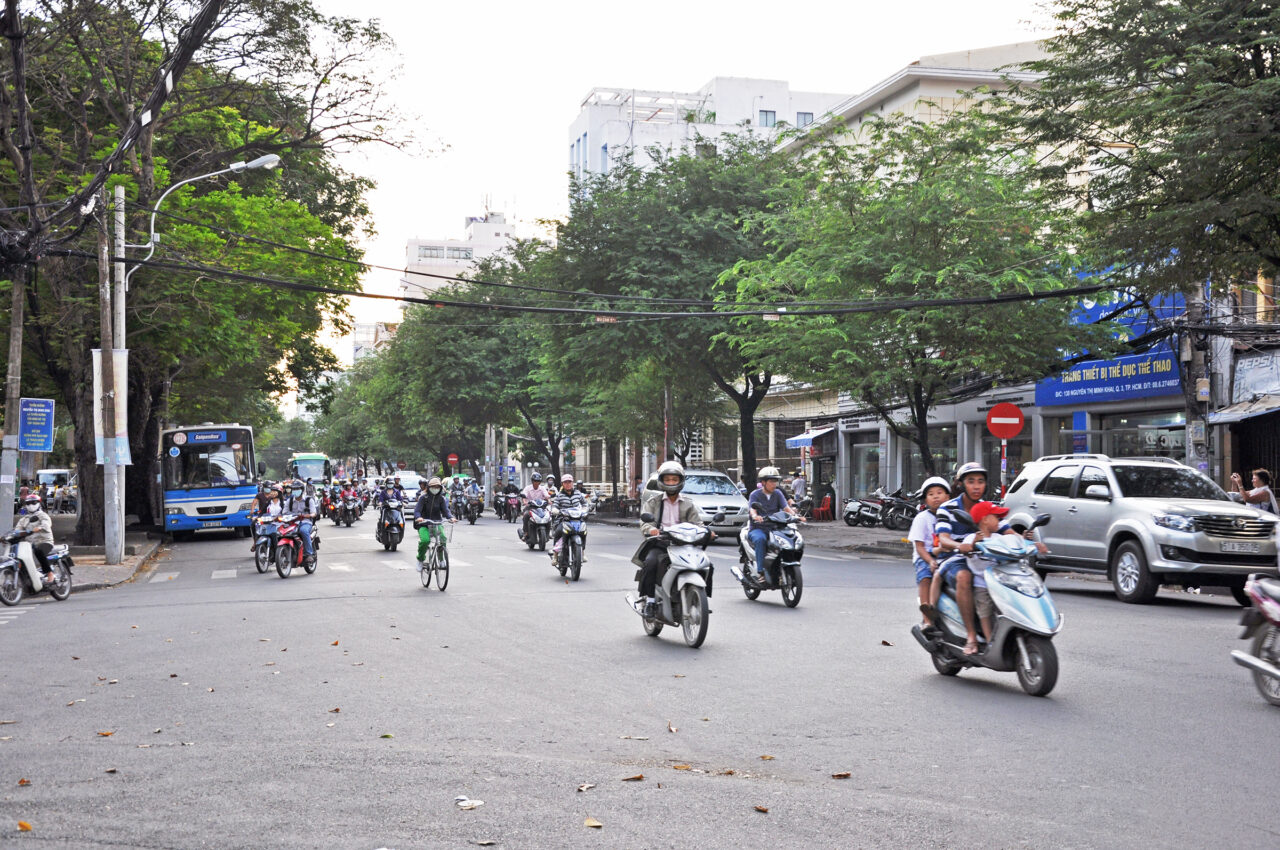
If you’re wondering whether it’s Saigon or Ho Chi Minh City, the answer is complicated. Officially it’s Ho Chi Minh City but some tourists and locals still refer to the city as Saigon.
Why was Saigon renamed Ho Chi Minh City? Well, when North Vietnam won the Vietnam War in 1975, they decided to rename the city after the prime minister, Ho Chi Minh, who was a revolutionary leader of the communist party. The name change was seen as a way to unify the south of Vietnam with the north.
Either is fine, but if you’re being “correct” then it’s Ho Chi Minh City.
Things to see in Ho Chi Minh City
On day 1 in Ho Chi Minh City I’d suggest visiting the city’s major attractions. If you wake up early, you can see a lot in a day. These include:
Ben Thanh Market – Ben Thanh Market is the best known market in the city and features over 6,000 small businesses selling everything from spices and nuts to handbags and electronic goods.
War Remnants Museum – This museum is a sobering experience, filled with harrowing photographs, exhibits and written information documenting what happened in the Vietnam War. Inside the museum you’ll learn about the effects of Agent Orange and other chemicals that were used by the U.S Military during the war. Agent Orange caused all sorts of deformities in children that were born and grew up in areas where the chemical was used. Outside the building there are tanks, helicopters, planes, and other pieces of military equipment.
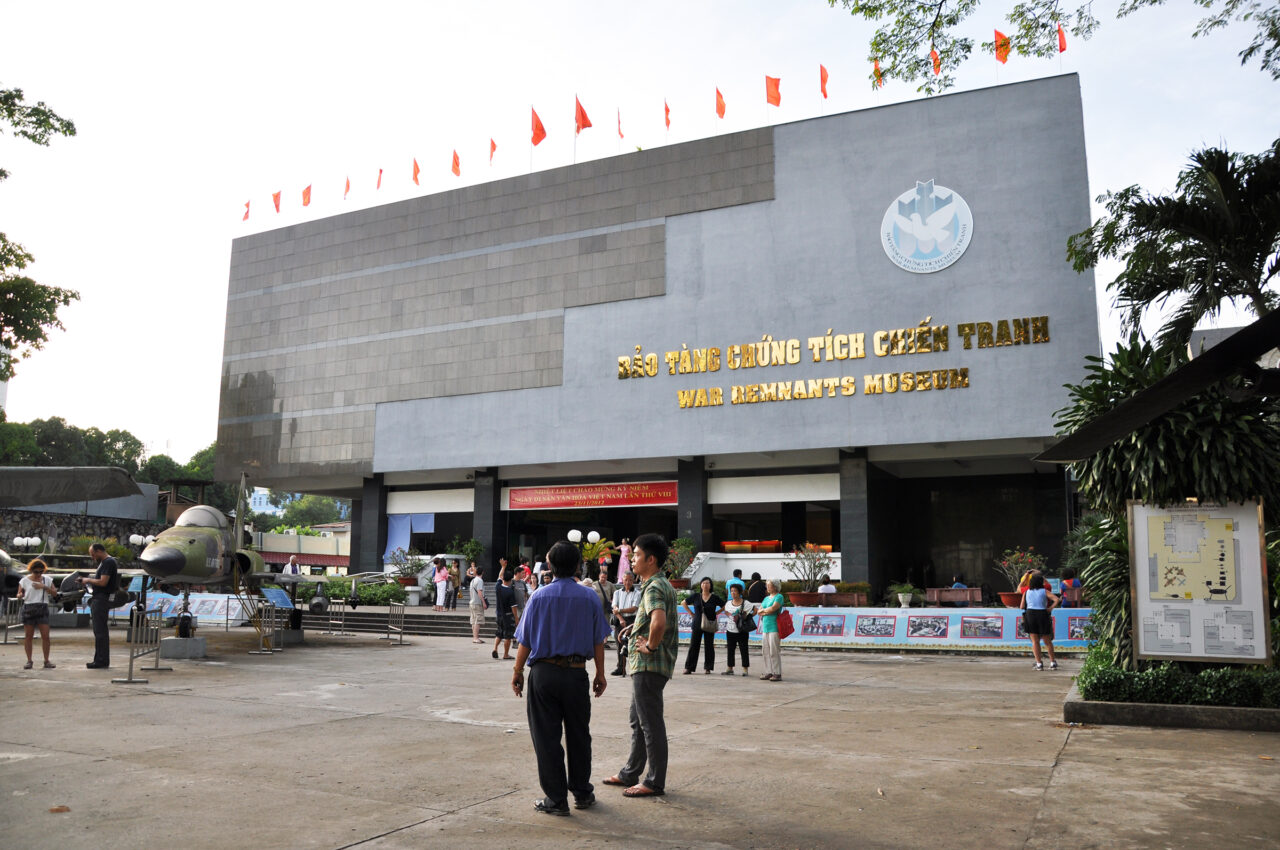
Independence/Reunification Palace – This major landmark was built as the home and workplace of the President of South Vietnam, but it is most remembered for the moment when the North Vietnamese army tank crashed through its gates, signalling the end of the Vietnam War.
Bitexco Tower and Sky Deck – This modern, 68 storey building is one of the tallest buildings in Vietnam, featuring a helipad sticking out of the top that looks like a flying saucer crashed into the building. The Sky Deck boasts 360 degree views of the city, so it’s a great place to take your camera and snap some photos.
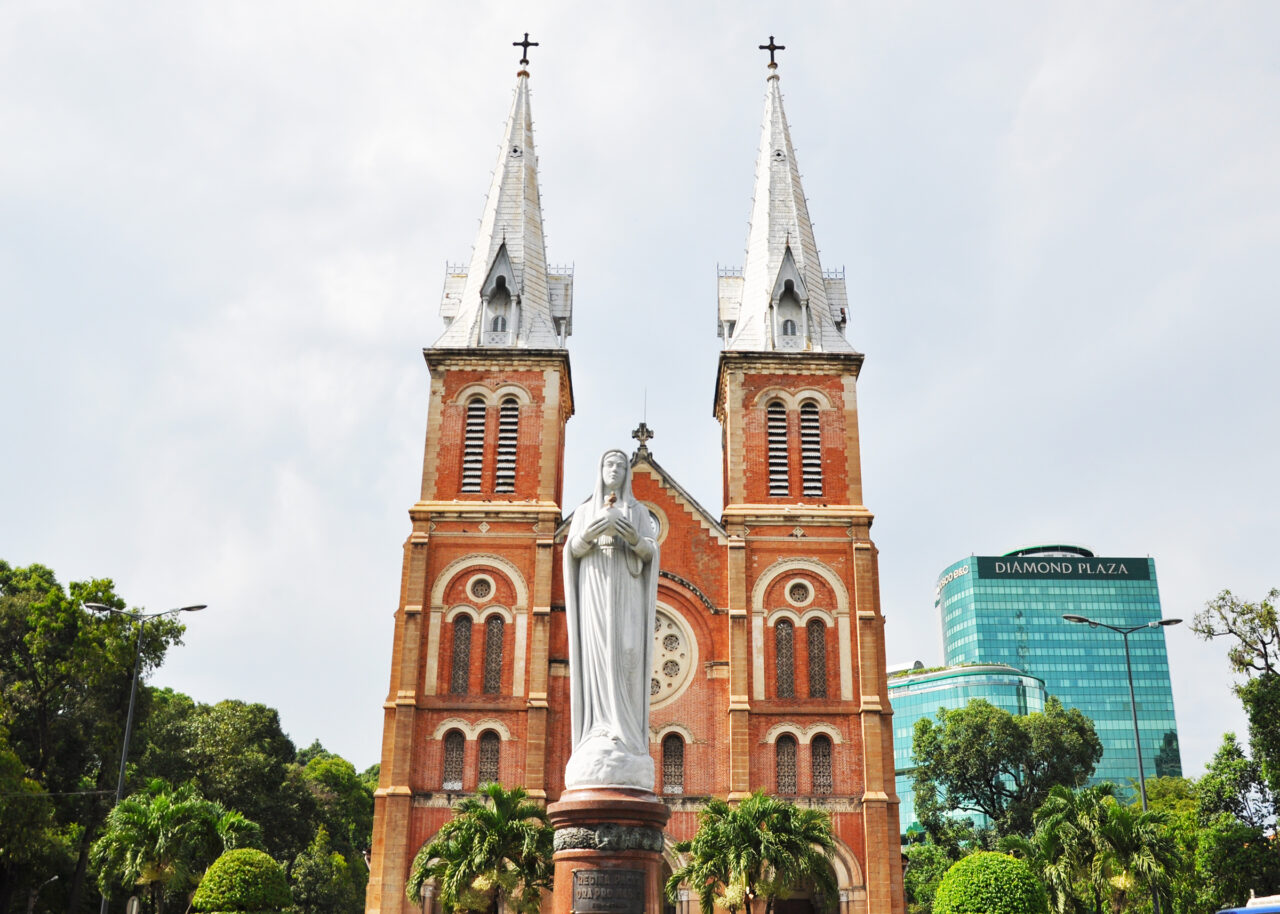
Notre Dame Cathedral – Built by the French colonists between 1863 and 1880 using materials imported from France, Notre Dame Cathedral is a striking building with a red-brick facade and two bell towers. It’s one of the last remnants of French colonial Vietnam and of Catholicism in a largely Buddhist country.
Central Post Office – The Central Post Office was designed by none other than Gustave Effiel, who also designed the Eiffel Tower in Paris. This yellow, gothic-style building dates back to 1886 and is one of the most striking buildings in the city.
Where to eat in Ho Chi Minh City
The Lunch Lady (Nguyen Thi Thanh) – Featured in an episode of Anthony Bourdain’s “No Reservations”, The Lunch Lady has been serving up Vietnamese soups since 1995.
Banh Mi Huynh Hoa – This is highly regarded as one of the best restaurants for Banh Mi in Ho Chi Minh City. This place is incredibly popular and there’s usually a line. Sandwiches are large, so you might want to share between two.
Banh Xeo 46A – Famous for its golden banh xeo crepes, stuffed with assorted veggies, shrimp, and meat. The pancake is folded up on a plate and paired with lettuce, herbs and sweet chilli dipping sauce. This place has been featured on numerous travel shows.
Banana Mama Rooftop & Kitchen – For a meal with views of the city, head to Banana Mama – a modern, airy restaurant with a cute rooftop terrace. Great for light bites and cocktails.
Day 2: Ho Chi Minh City – Chu Chi Tunnels
On your second day, book a tour to visit the Chu Chi Tunnels, where you can learn what it was like for the Communist guerrilla troops (Viet Cong) who used an immense network of tunnels to move around without detection during the Vietnam War. They used the tunnels to hide, transport supplies, plant booby traps and mount surprise attacks.
During the war the tunnel network spanned a distance of around 250 kilometers from the outskirts of Saigon to the Cambodian border. The tunnels were often dug by hand, one bit at a time. Life inside the tunnels wasn’t pleasant, as they were often infested with insects, rodents and reptiles.
You’ll learn how the Viet Cong used ingenious ways of hiding from the US troops and you’ll also have a chance to crawl through one of the tunnels yourself.
Bear in mind that these tunnels have been widened and reinforced, so the experience isn’t as scary as what it would have been like for the Viet Cong. If you get claustrophobic or you suffer from breathing difficulties though, you might want to give this part a miss.
There’s also a shooting range on site, where you can pay extra to fire an M16 rifle.
Days 3 & 4: Nha Trang
Getting to Nha Trang
We took an overnight sleeper bus from Ho Chi Minh city to Nha Trang, which took around 10.5 hours and cost $12. If you’re on a budget, this is the cheapest option and you can travel overnight so you don’t lose any time in the day.
Alternatively you can take the train, which is faster and more comfortable than the bus, but more expensive. Trains run from 6:19 to 21:25 and prices start at $24, with sleeper beds costing a lot more.
If money isn’t an issue, book a taxi transfer from Ho Chi Minh city to Nha Trang, which will cost you about $185 USD. You don’t have to search for bus or train stations and you’ll be dropped off door-to-door, with the journey taking around 8 hours.
You can find detailed information on the different methods of transport to get to Nha Trang on the Kiwi Taxi website.
What to do in Nha Trang
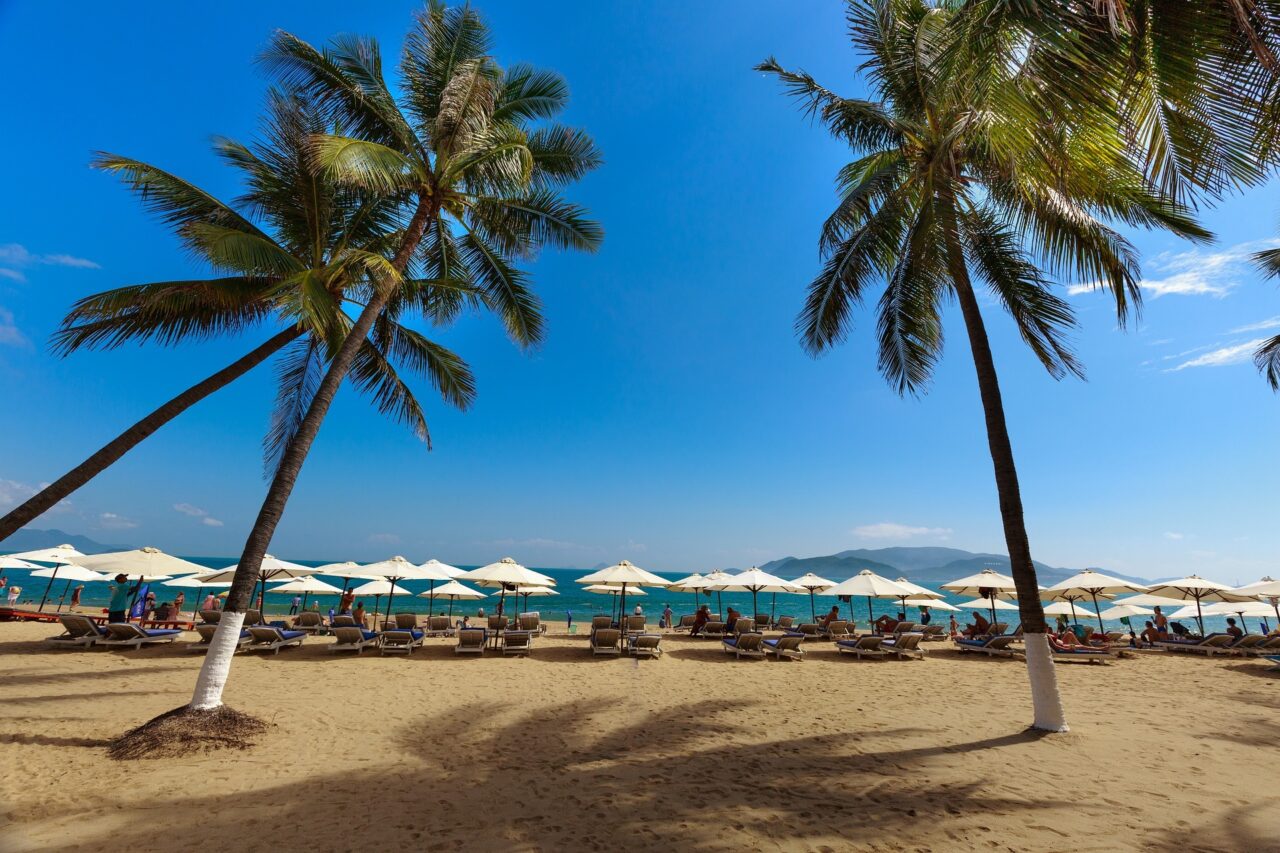
Vietnam is known for its amazing beaches and islands, boasting around 2,000 miles of coastline. Situated on the South China Sea, Nha Trang is one of the country’s most popular beach resorts, and is the perfect place to unwind. The best thing to do here is just relax on one of the city’s white sandy beaches; Tran Phu Beach is the closest to walk to, making it the most popular beach in Nha Trang.
Now while you’re in Nha Trang, I’d highly recommend booking the infamous Nha Trang party boat. This is something that everyone on the southeast Asia backpacker trail recommended!
You’ll spend time snorkeling in the ocean, then you’ll eat a delicious Vietnamese lunch on deck. Next there’s live music and you’ll spend the afternoon singing at the top of your lungs to songs like Wonderwall (which I know the lyrics to very well since I’m from Manchester, the birthplace of Oasis).
Days 5 & 6: Hoi An
Getting to Hoi An
If you’re traveling by land you’ll want to take a night train or bus so you don’t lose a day traveling. The train takes 11 hours, while the bus takes around 10.5 hours.
Bus is the most convenient way to get from Nha Trang to Hoi An, since it drops you in a central location in Hoi An. The train station is in Da Nang, so you’ll have to take a taxi from there.
The other way of getting from Nha Trang to Hoi An would be by flying, but bear in mind the nearest airport to Nha Trang, Cam Ranh Airport, is 30km away. From there the flight is 1 hour to Da Nang, then you’d take a taxi from there to Hoi An.
Intro to Hoi An
Hoi An is an absolute must-do in Vietnam. No trip is complete without a visit to this city, which features an Ancient Town that’s been designated a UNESCO World Heritage Site.
It’s incredibly beautiful and picturesque, with historic yellow buildings, pretty lanterns and tranquil riverside setting. The city is recognized for being a well-preserved example of a Southeast Asian trading port dating from the 15th to the 19th century.
Hoi An was the most relaxing part of my trip and a place I’d definitely visit again. Many visitors come here to go shopping, since you can get pretty much anything tailored here and the quality is good.
Things to do in Hoi An
Spend your first day in Hoi An just walking around the Ancient City, strolling along the Thu Bon River and browsing the shops.
Attractions and things to do in Hoi An include:
Japanese Covered Bridge – One of the most photographed landmarks in Hoi An, the Japanese Covered Bridge is small but beautiful, with a pagoda-like roof and is guarded by sculptures of two dogs and two monkeys. Dating back to the 18th century, the bridge was built by the Japanese that were living in Hoi An so that they could reach the Chinese quarter across the water.
Central Market – Located on the riverside, Central Market is full of vendors selling spices, herbs, fruits, vegetables and fine silks. It’s also a great place for taking photographs and seeing the local way of life.
Phung Hung House – Dating back over 200 years, Phung Hung House was owned by a Vietnamese merchant and it was used as a spice and handicraft store selling things like cinnamon, salt, chinaware and glassware. The house features Japanese, Chinese, and Vietnamese influences, with dark wood walls and columns, plus a beautiful balcony.
Fujian Assembly Hall – This beautiful assembly hall has a baby pink exterior and was built as a place where people from Fujian in China could congregate and socialize while they were in Hoi An. Inside the hall you’ll find the Jinshang Golden Mountain temple dedicated to Thien Hau, the goddess of the sea.
Take a cooking class – A very popular activity in Hoi An is to take a Vietnamese cooking class. There are numerous places where you can do this dotted around the city, so take a look on Google Maps and find one you like.
Hit the beach
On your second day in Hoi An I’d suggest heading to An Bang Beach, which is located 7km outside of town. Rent some lounge chairs, order a beer and spend the day just lounging on the beach.
It’s a beautiful and relaxing stretch of sand, lined with seafood restaurants and other eateries. If you want to stay into the evening, places like Soul Kitchen and La Plage offer happy hours, parties and music till late.
You can easily get to the beach by taxi, bicycle or motorcycle.
Where to eat in Hoi An
Morning Glory – One of the best restaurants in Hoi An, Morning Glory serves a variety of classic Hoi An dishes, including Hoi An chicken rice, Cao Lau noodles with marinated pork, and white rose dumplings. The restaurant has its own cooking school, so if you want to learn how to make Vietnamese food, this would be a good place to start.
Mango Mango – Popular restaurant just a few feet from the river with balcony views of the Japanese Bridge and Hoi An Ancient Town. This place has a fun vibe, with good cocktails and modern Vietnamese dishes made with locally sourced ingredients.
Vy’s Market – A small market hall with a central courtyard surrounded by food stalls. Food can be ordered using tablets on the tables but you’re invited to tour the food stands and see how the food is made before ordering. Vy’s Market Restaurant gives you the street food experience but with a fine dining atmosphere.
Good Morning Vietnam – If you’ve grown tired of eating Vietnamese food for every meal and want to switch things up, check-out Good Morning Vietnam, which is actually an Italian restaurant serving pizzas, pastas, soups, salads and Italian entrees.
Day 7: Huế
Getting to Huế
Hue is around 126km from Hoi An. You can take a bus directly from Hoi An to Hue, or you can take the train from Da Nang, which is about 45 mins drive from Hoi An. The train and the bus both take around 4 hours.
Alternatively, if you’re confident on a motorbike, you can rent a motorbike in Hoi An and ride it across the Hai Van Pass, dropping it off in Hue.
The train from Da Nang is more scenic than the bus, allowing you to admire the scenic coastal views through the window. If you take the SE10 9:57 train in Da Nang, you’ll arrive in Huế by 12:53pm.
Bus-wise there are several buses that run throughout the day, although if you’re sticking to the itinerary you’ll want to take an 8am bus, which will arrive at noon and allow you to spend the day sightseeing in Hue.
Intro to Huế
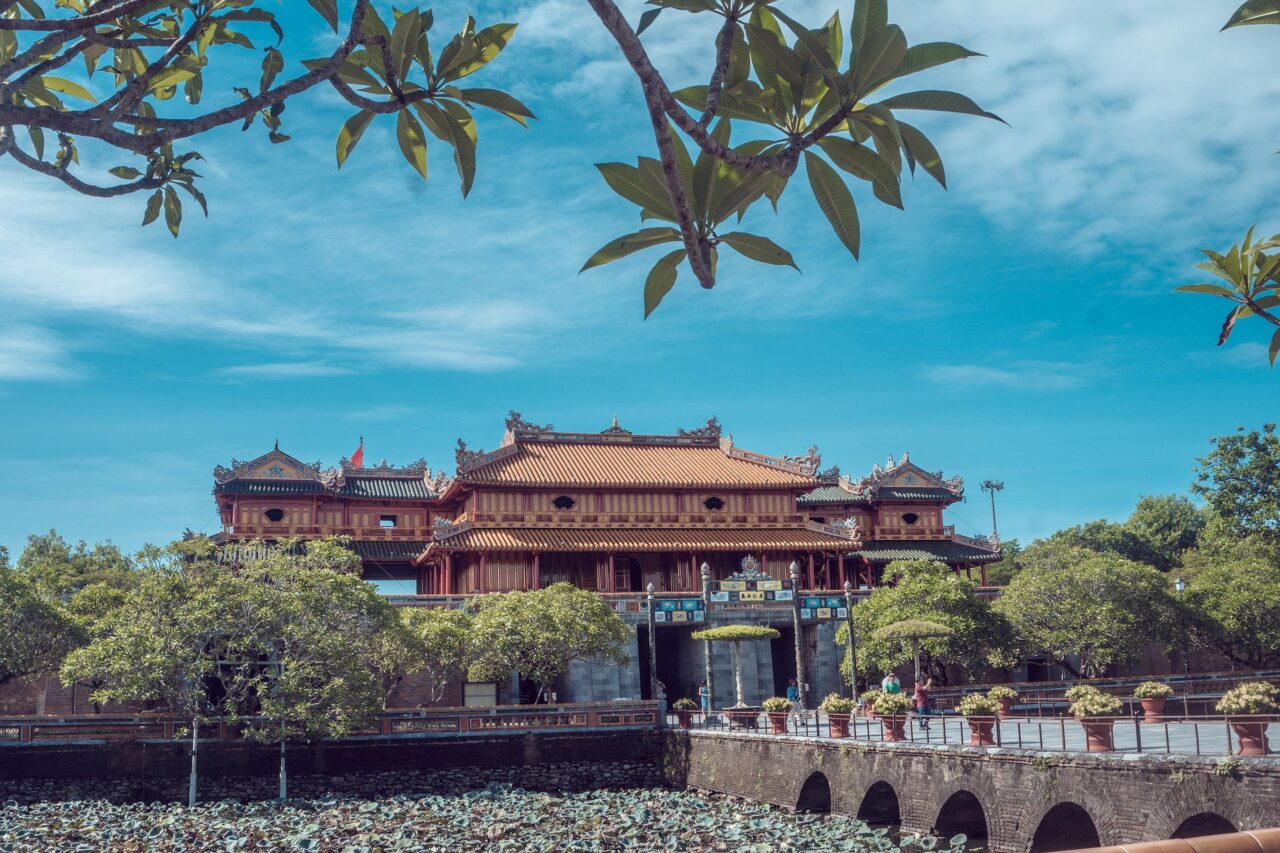
Hue is a former Vietnamese capital that served as the Nguyen Dynasty’s seat of power from 1802 until 1945, when the Emperor Bao Dai resigned as the country was divided into two. Due to its central location between North and South, the city suffered from intense conflict during the Vietnam War. The city’s main attraction is the Royal Palace of the Imperial City, which is recognized as a UNESCO World Heritage Site. Since Hue was the capital of the last dynasty in Vietnam, it is also home to the mausoleum complex of Kings, which houses the tombs of the Nguyen Dynasty emperors.
Hue is divided into two main parts by the Perfume River, with the old city on the north side and the newer city on the south side, which is where you’ll find most hotels and restaurants.
Things to do in Huế
The tombs of the Emperors – Tomb of Tu Duc, the Tomb of Minh Mang and the Tomb of Khai Dinh are the main tombs to visit. These tombs were built to honor the famous emperors of Huế.
The Perfume River – Alongside the river is a scenic promenade, which is perfect for an early morning or evening stroll.
Imperial Citadel – This vast complex is the former site of the old capitol and features moats, carved gates, royal pavilions, gardens and tombs. The Imperial Citadel gives visitors a sense of what life was like during the Nguyen Dynasty. Since it’s a sprawling complex, make sure you give yourself enough time to properly walk around.
Day 8: Sightseeing in Hanoi
Getting to Hanoi
The distance From Huế to Hanoi is about 675km, so the quickest way is to catch a flight. The flight time takes around 1 hour 15 mins, but with travel to and from the airports you’re looking at a total travel time of 3 hours. You could catch an evening flight from Huế on day 7, or an early morning flight on day 8.
The train from Huế to Hanoi takes around 14.5 hours, while the bus takes 13 hours. There are trains and buses that depart Huế in the early evening and arrive in the morning.
Intro to Hanoi
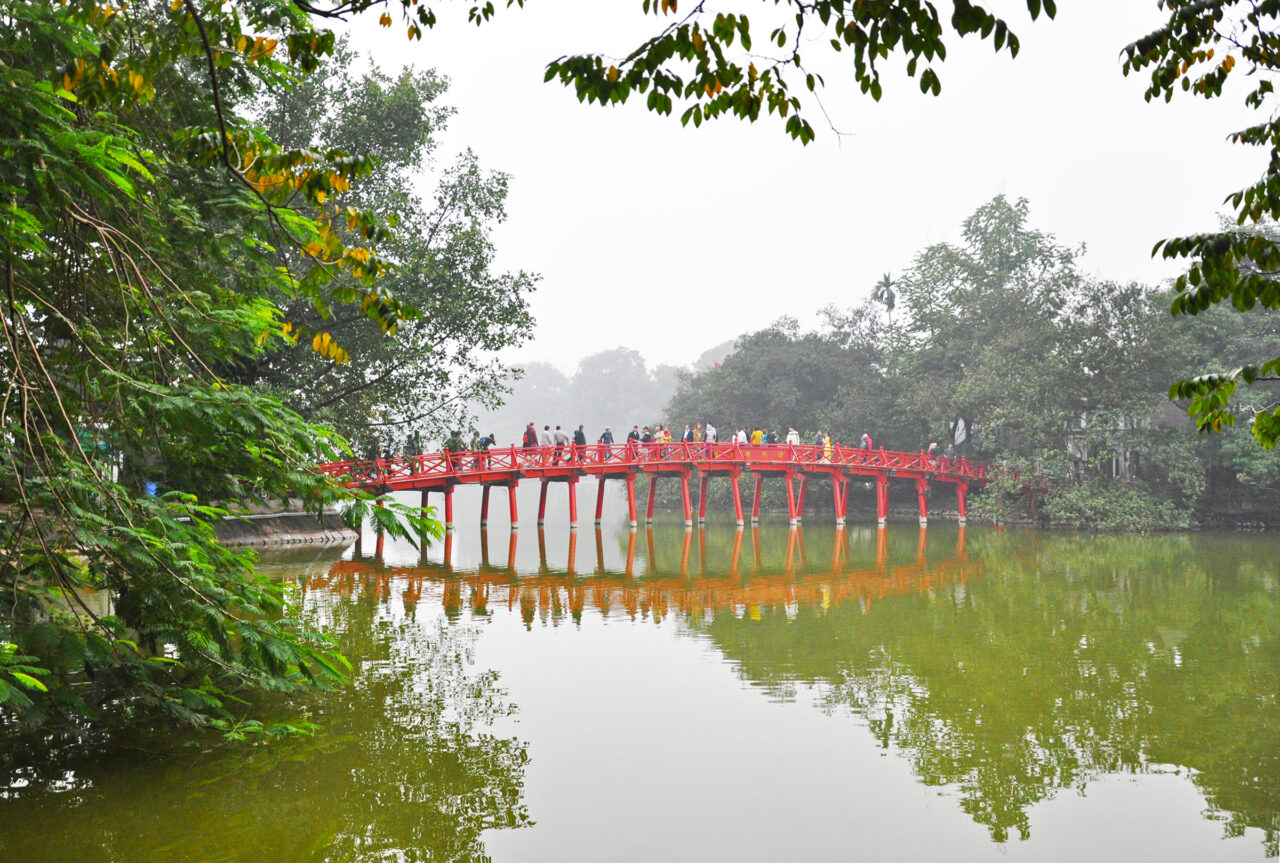
Located in northern Vietnam, Hanoi has a totally different feel to Ho Chi Minh City and if you travel to Vietnam in winter (November to April), you’ll find it to be much colder, so make sure to bring a jacket!
While it’s the country’s capital and the cultural and political center, Hanoi’s Old Quarter still has a village-like feel with bustling narrow streets filled with food stalls, beer joints, cafes and shops. It’s easy to get around on foot and most places aren’t far from each other.
Tourists and locals sit on child-size plastic chairs and order street food from the stalls, soaking up the atmosphere and watching the world go by.
This captivating ancient city is a blend of East meets West, with a beautiful lake, well-preserved colonial architecture, shop houses and ancient pagodas.
Things to do in Hanoi
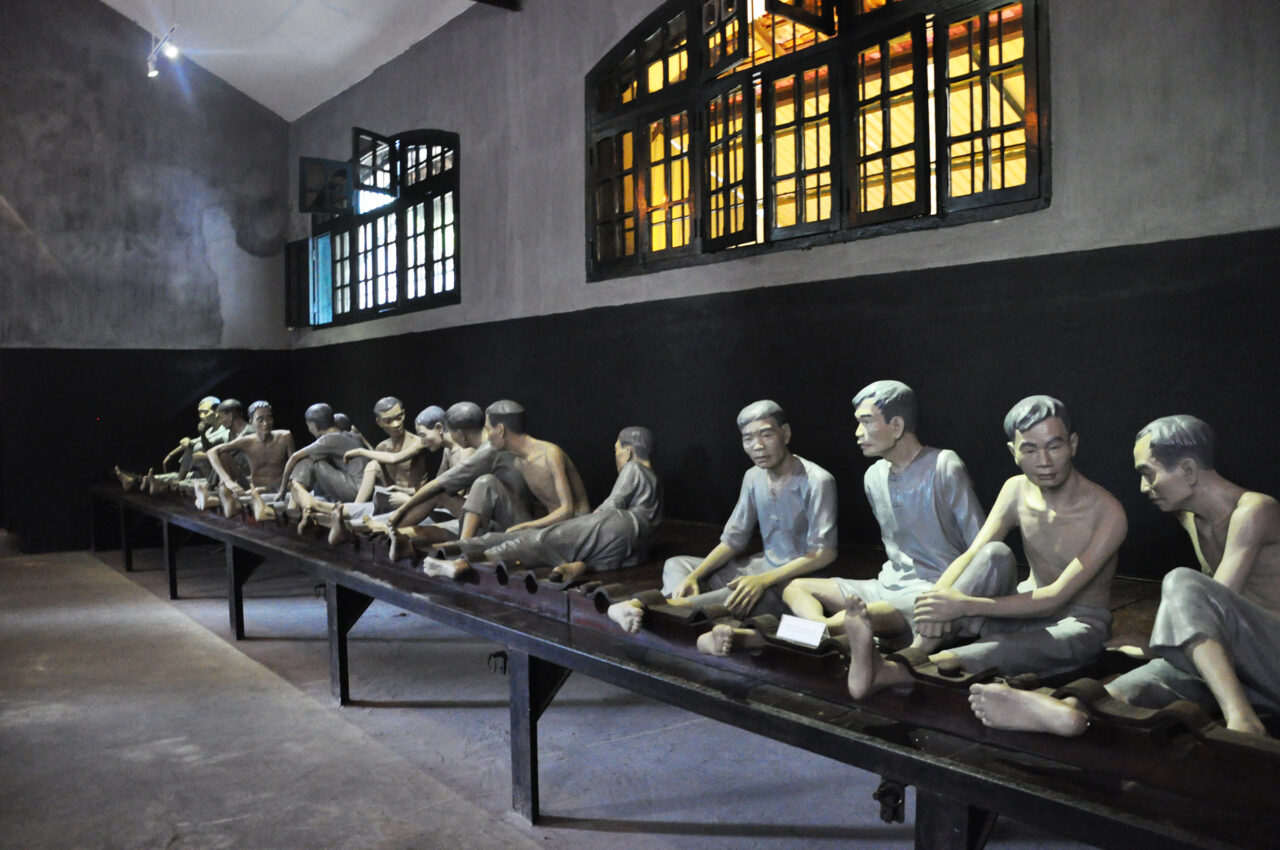
Hoa Lo Prison – Once dubbed the Hanoi Hilton, Hoa Lo Prison was used to house US prisoners of war and pilots that had been shot down during the Vietnam War. Prior to that, it was also used by the French colonialists in French Indochina to house political prisoners.
Inside the museum is a guillotine, which was used by the French to behead prisoners.You learn about what life was like in the prison and the torture methods that were used there.
In contrast, the displays portray U.S POWs as being clean shaven and well looked after, which is an unbalanced representation of what went on. Photos and videos show prisoners being treated well, enjoying Christmas dinner and playing chess. These photos and videos were staged and this is all propaganda from the communist government, since former prisoners have given much more harrowing accounts of their time in prison.
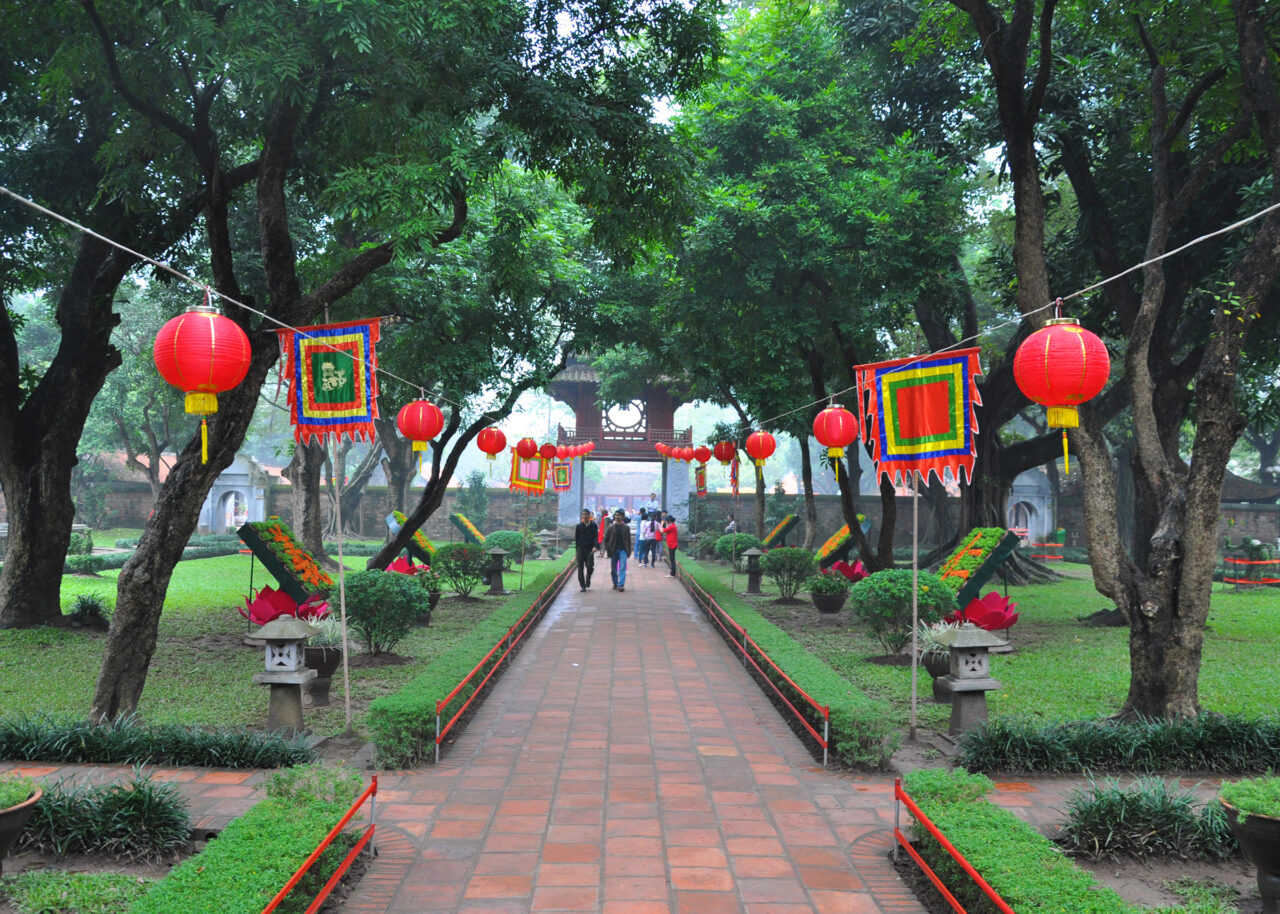
Temple of Literature & National University – Built in 1070 during the time of Emperor Lý Thánh Tông, this well preserved temple is dedicated to Confucius, scholars and sages and is one of Hanoi’s most beautiful attractions. Within the grounds you’ll find the lake of literature, the Well of Heavenly Clarity pavilions, passageways and courtyards.Initially the university only accepted royal family members and aristocrats, but later on it opened up to ordinary people who showed great potential.
Lotte Observation Deck – If you want views of the city, head to Lotte Observation Deck, which features a glass Sky Walk that makes you feel like you’re floating over Hanoi.Two high speed elevators take visitors from B1 to the 65th floor in 50 seconds.
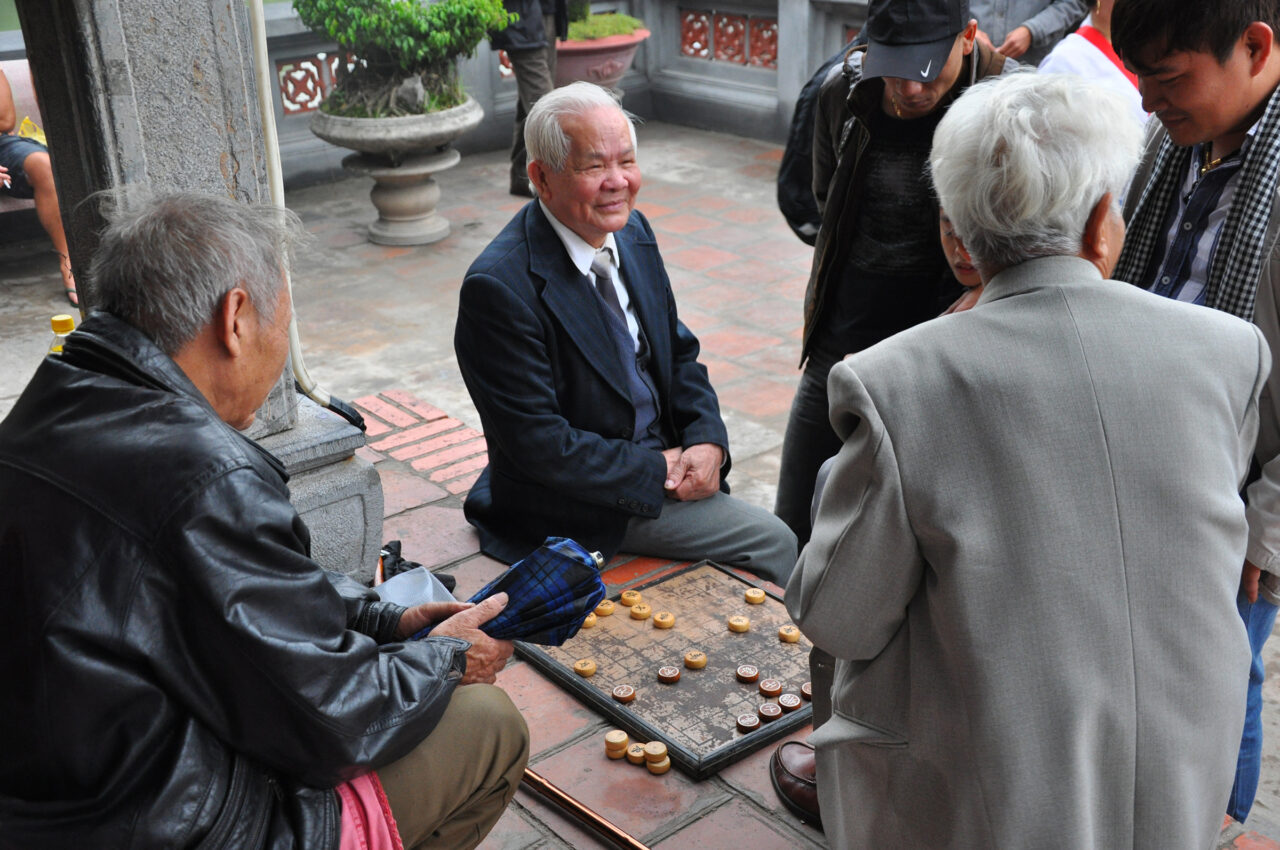
Hoan Kiem Lake – This picturesque lake covers 12 hectares in the center of Hanoi. The lake provides a quiet and tranquil escape from the bustle of the city and in the center you’ll find Ngoc Son Temple, which sits on a small island. Locals sit here playing mahjong and socializing with friends.
Where to eat in Hanoi
Banh Mi 25 – For some delicious Banh Mi, head to Banh Mi 25, which is owned by a married couple called Phuong and Ha, who decided to open their own stall in 2014. They named it after the number of the home where they live and since then the stall has gone from strength to strength serving Banh Mi to locals and travellers in the Old Quarter.
Phở Gia Truyền Bát Đàn – Pho restaurant selling only beef pho in three options. This hole-in-the-wall shop in the Old Quarter is packed with locals and the broth is delicious.
Cha Ca Than Long – If you want to try the best Cha Ca Than Long in Hanoi, visit this restaurant, which goes by the same name. The dish consists of firm white fish coated in turmeric and cooked table side with dill.
Days 9-10: Halong Bay
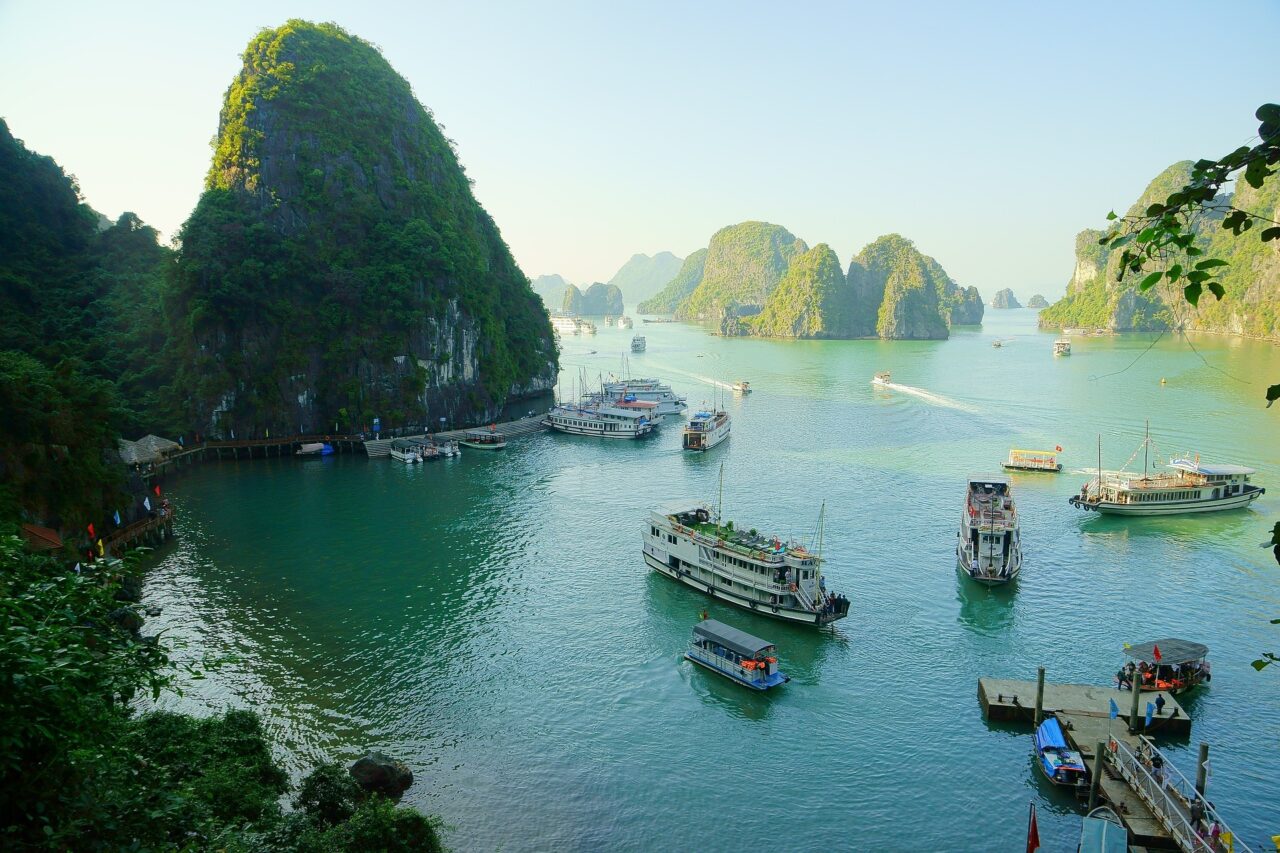
Boat cruises to Halong Bay usually depart at noon and so if you’re leaving from Hanoi, the bus transfers depart between 8am and 8:30am to meet the cruises. The journey takes 4 hours, so bring snacks!
You’ll sleep overnight on a wooden junk boat, so this is a full 2 day excursion.
You can book Halong Bay tours through your accommodation or travel agencies in Hanoi. If you’d prefer to book online and pay with your credit card before you go, then you can do so with Viator, which offers a wide selection of Halong Bay tours.
Personally, and I’m going to be really honest here, I found my Halong Bay boat trip to be a bit boring. It didn’t help that the weather was foggy and rainy, but the boat also just lacked entertainment. Be sure to research the various tour companies and look at what activities they offer. Look at whether they offer things such as Happy Hours, free drinks, cooking classes, karaoke and other entertainment.
Below is how Halong Bay actually looked in al the foggy, wet weather.
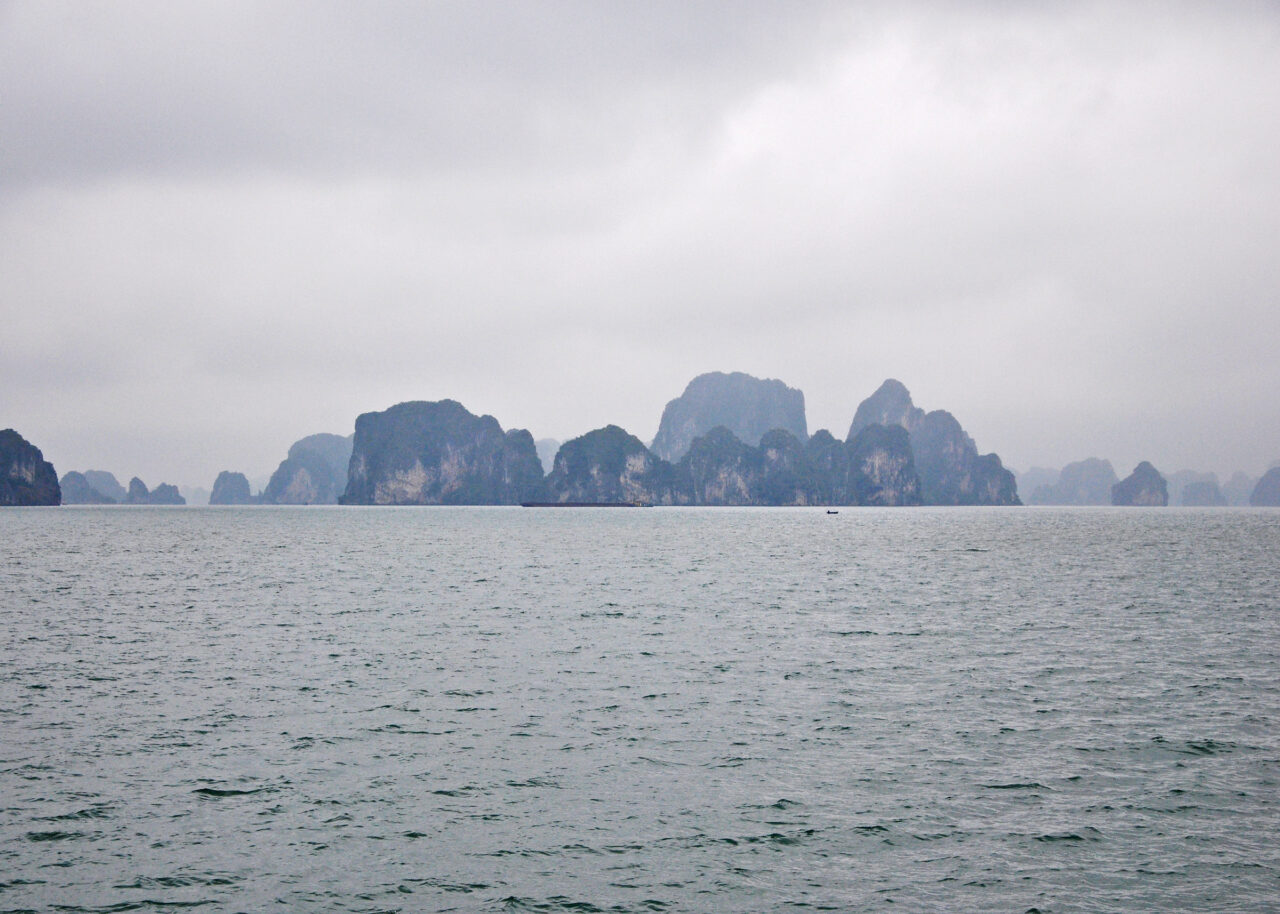
If you’re social and want to have fun, I’d suggest doing the famous Oasis Halong Bay Party Cruise. We regretted not doing this one! The boat has jacuzzis on board for relaxing and there’s plenty of entertainment including group kayaking, beer yoga and live DJs and staff performances every night.
Typical activities you’ll do on all 1 night Halong Bay Cruises include:
- Group kayaking on Halong Bay
- Sung Sot Cave – impressive cave full of stalagmites and stalactites. To reach the cave you have to climb more than 50 steps.
- Visit to a floating village
- Cooking class on-board
- Swimming on Titov island, known for its crystal clear water
Is 10 days in Vietnam enough?
You can certainly see quite a bit of Vietnam in 10 days, so this is plenty of time to give you a taster of the country! Although personally I’d recommend spending up to 14 days there if you want to see other places such as Hue, Sapa and the Central Highlands.
10 days in Vietnam is a good amount of time, but two weeks in Vietnam will allow you to see a whole lot more without feeling rushed.
Getting around Vietnam
Bus – If you’re on a budget then the best way to get around Vietnam is by taking the deluxe night buses, which often have sleeper beds, air conditioning, TVs and even WiFi. Check out my list of tips for riding night buses in Vietnam. What I like about traveling by bus is that they often drop you in more central locations than the train stations. You can book buses online with Baolau.com and receive an e-ticket or you can buy them at bus stations or through local tour operators.
Train – Vietnam has more than 2,600 kilometers of railway, linking places such as Hanoi, Hué, Danang, Nha Trang, and Ho Chi Minh City, so taking the train is a popular option. Train travel is more comfortable than the bus, although it’s more expensive. The upside is you get to view some beautiful scenery along the way. For extensive information about trains in Vietnam, check out Man in Seat 61.
To search your transportation options and book tickets, you can use a site called Baolau.com. They charge the Vietnamese Railways price, plus a small service fee, and you can pay by credit card. Alternatively you can book through 12Go.asia. You can also purchase tickets at the station.
Flight – The quickest option is flying, although you’ll spend time getting to and from the airport. If you’re short on time, this might be the way to go. Airlines that offer domestic flights include Vietnam Airlines, JetStar Pacific, Vietjet Air and Bamboo Airways. To search flights, my search engine of choice is Google Flights.
At the time of writing, a quick flight search for a one-way ticket between Ho Chi Minh City and Hoi An throws up prices starting at just $27 and going up to $67 in peak periods. Pretty cheap!
Foods to try in Vietnam
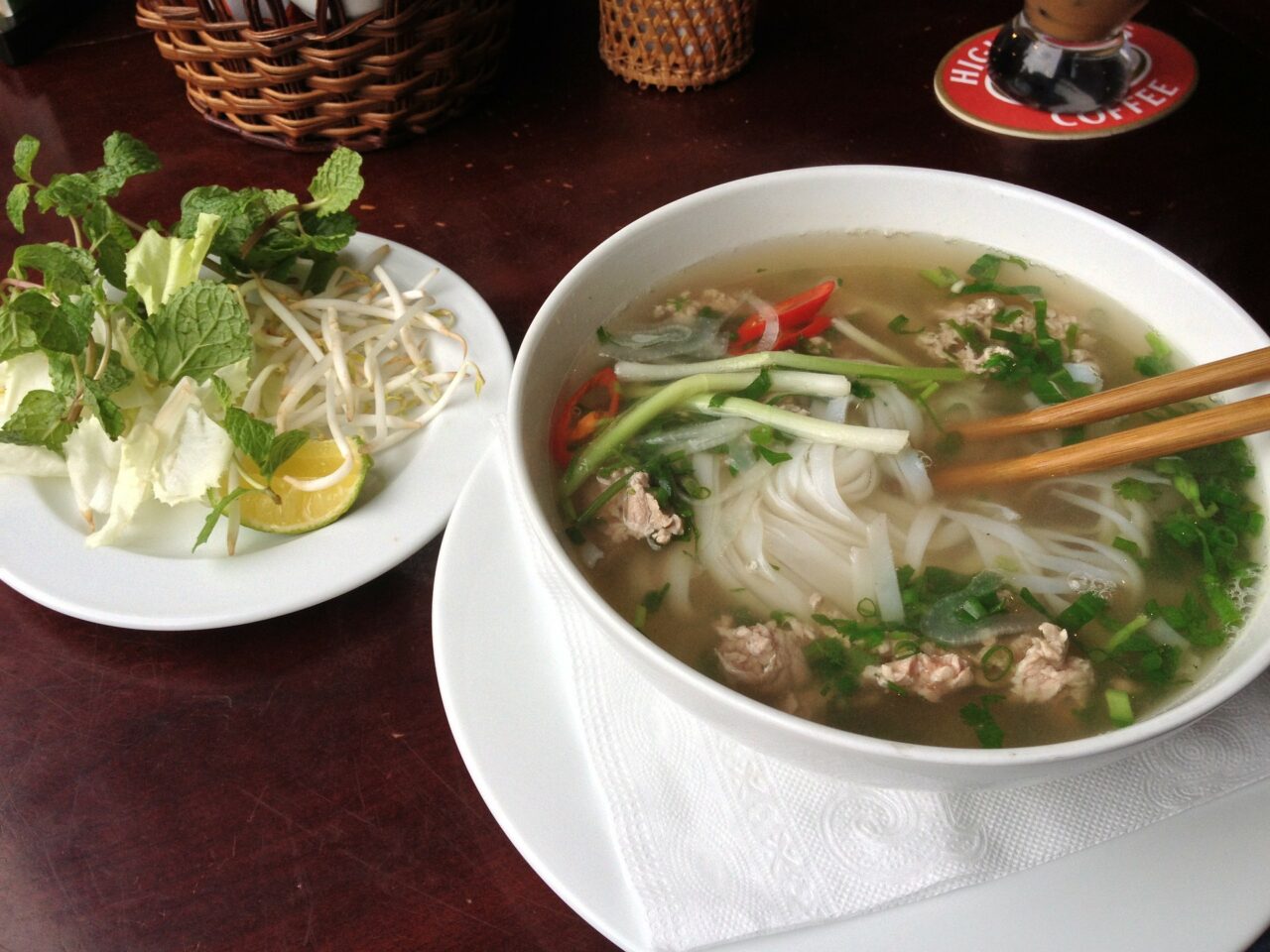
My favorite thing about Vietnam is the food. Out of all the food in southeast Asia, I think it’s my favorite, just because it’s so fragrant and fresh, served with chillies, herbs and limes as accompaniments. These are some of the dishes you can try:
Phở – The most well-known Vietnamese dish, Pho is a rice noodle soup with meat such as beef or beef balls, usually topped with fragrant herbs. It’s considered Vietnam’s national dish.
Bánh Mì – Vietnamese sandwiches served in fresh baguettes filled with meat, cucumber, carrot, coriander and sometimes pâté.
Mì Quảng – Part soup, part salad, Mi Quang is a noodle dish consisting of wide rice noodles tossed with meat and a selection of vegetables and herbs. It’s then soaked in a small amount of pork or chicken broth, which is often seasoned with turmeric, giving it a yellow color. The dish is then commonly topped with peanuts and toasted sesame rice crackers.
Bún Chả – A speciality of Hanoi, Bun Cha is a famous dish consisting of white rice noodles topped with grilled, fatty pork or pork patties, served with fresh vegetables, herbs and dipping sauce.
Best time to visit Vietnam
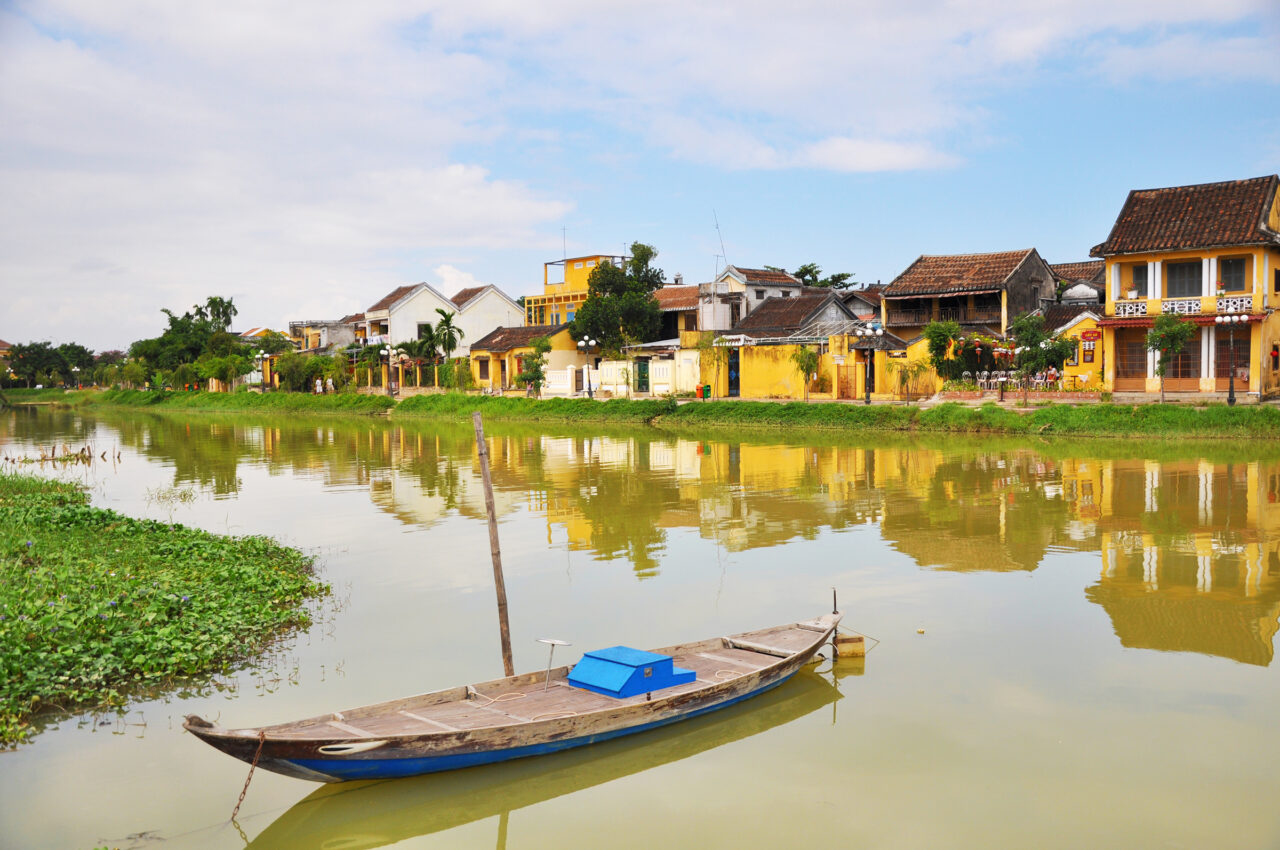
Since Vietnam is long and thin, the climate is different in the north compared to the south. On my trip I started out wearing T-shirts and dresses in Ho Chi Minh City, but by the time I made it to Hanoi I needed jeans and a jacket.
In the north it’s hot from May to October but the downside is there’s significant rainfall. November to April is much cooler but drier. Therefore, the best time to visit the north is during the spring time (March and April), or autumn (September to November). Conditions won’t be too cold or too wet.
In the south of Vietnam it’s warm all year round, so any time is an OK time to visit. The hottest months and driest months are from November to April, while the months of May to October are slightly cooler and wetter, but still warm.
Tips for visiting Vietnam
You will be hassled – My main complaint about Vietnam was the amount I got hassled. I’ve been hassled to buy things all over Southeast Asia but in Vietnam it’s intense. People will often follow you down the street to try to get you to purchase their goods, and when you get off the night buses you’re bombarded with people trying to get you to stay at their accommodation. The best thing to do is just not make eye contact and say no.
There are tourist prices and local prices – This is just the way it is in Vietnam. Yes you are often paying more or being ripped off. But in a country where many people are poor, this is how it goes. In many restaurants and food stands in Hanoi, there are tourist menus and then menus for the locals with completely different prices.
Learn to speak some basic words – A lot of Vietnamese people don’t speak English very well, which can make things a little more tricky if you don’t know where you’re going. It’s a good idea to learn some basic Vietnamese words before you go.
Haggle – If you go shopping in the markets or want to negotiate on tailored clothes in Hoi An, don’t be afraid to haggle on the prices.
A final word
If you can only get 10 days off work or you’re short on time, then you can certainly see Vietnam in 10 days if you follow this itinerary. You’ll miss out on some places such as Sapa, the Highlands and Hue, but you’ll still get to see quite a bit.

